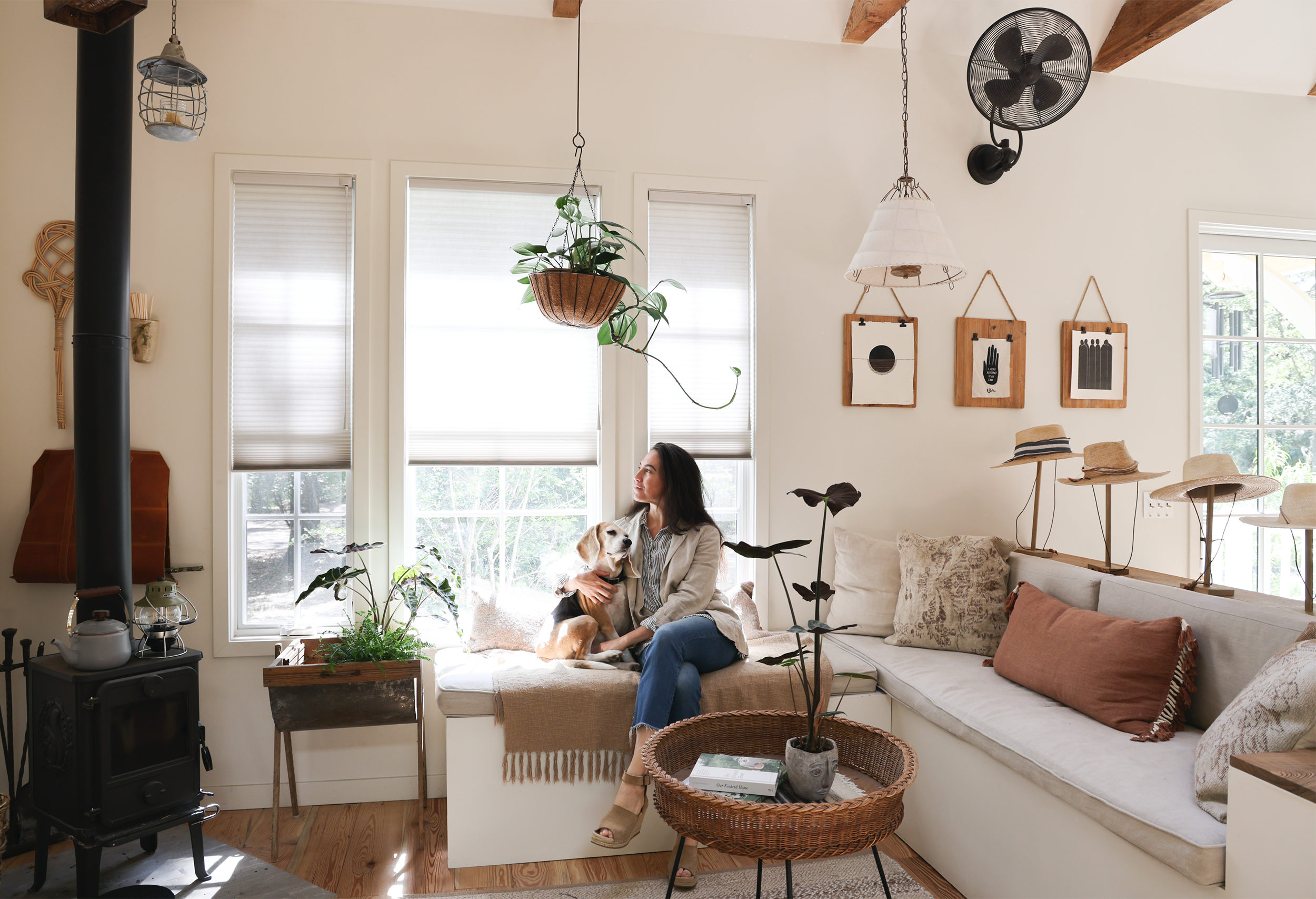
Trends
Style and Sustainability in a Small Cottage
July 27, 2023
by Hunter Douglas
At 913 square feet, designer Whitney Leigh Morris’ captivating cottage in Florida is nearly double the size of her prior home in Los Angeles.
At 913 square feet, designer Whitney Leigh Morris’ captivating cottage in Florida is nearly double the size of her prior home in Los Angeles. That California abode served as a veritable living lab for the first chapter of the small-space designer’s sustainability-minded design resource, Tiny Canal Cottage, which helps followers live eco-friendly without sacrificing aesthetics.
At 913 square feet, designer Whitney Leigh Morris’ captivating cottage in Florida is nearly double the size of her prior home in Los Angeles. That California abode served as a veritable living lab for the first chapter of the small-space designer’s sustainability-minded design resource, Tiny Canal Cottage, which helps followers live eco-friendly without sacrificing aesthetics.
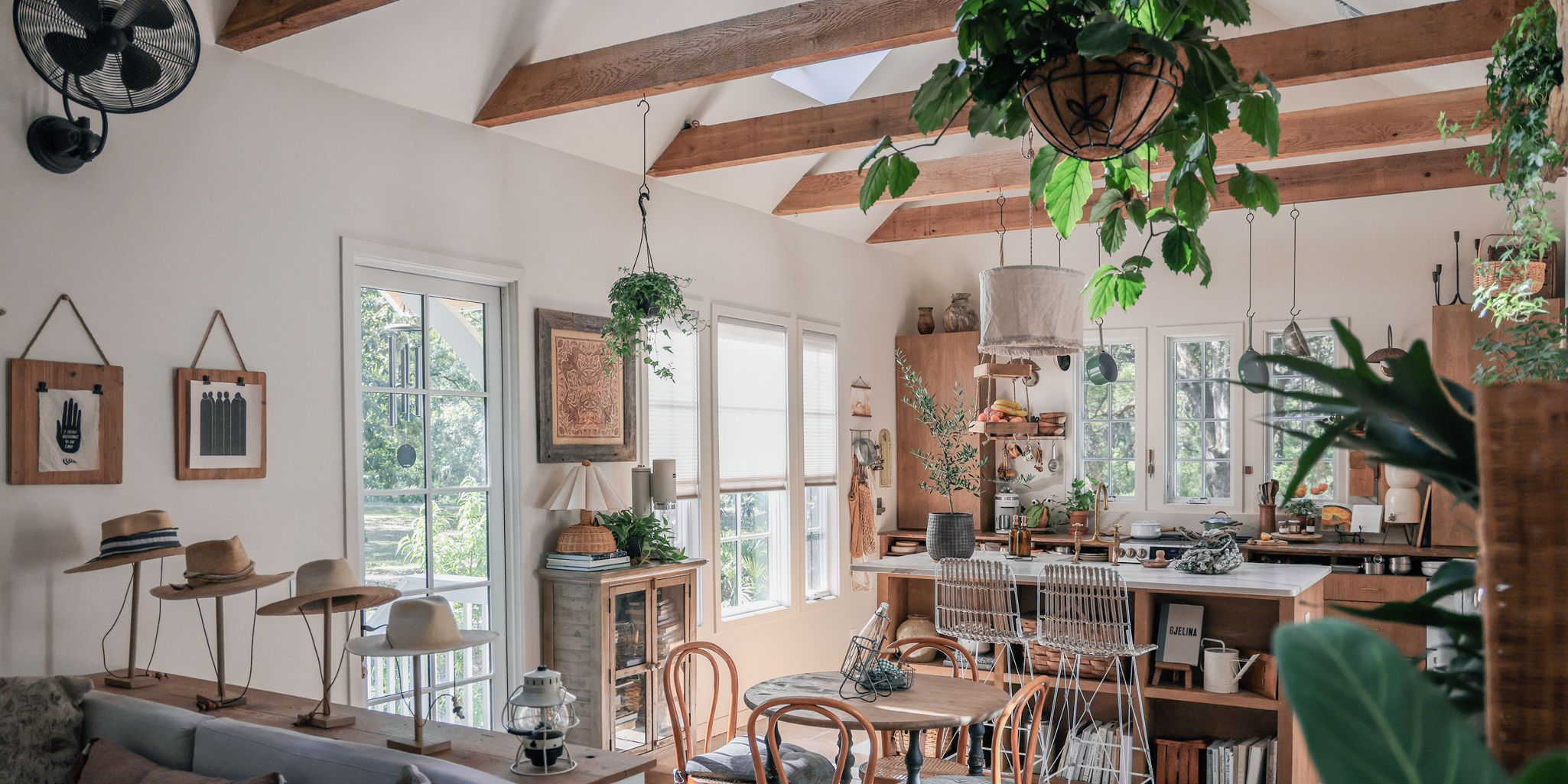
Duette Honeycomb Shades Fabric: Architella® Elan® Color: Birch Bark
For the new space, Whitney—who, with her family, splits time between an 1800’s-era farmhouse in southern France and, now, the woods of northern Florida —continues to maximize light, space and style all while treading with a still-minimalist footprint.
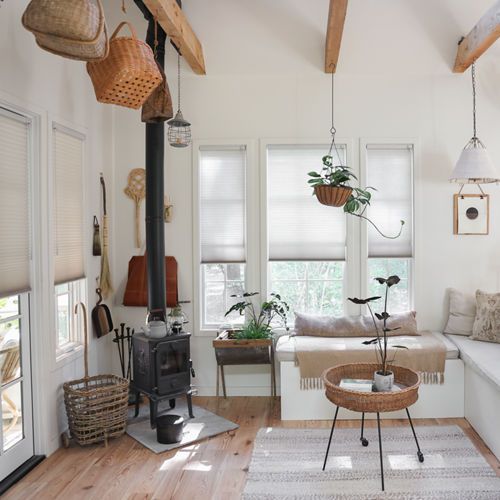
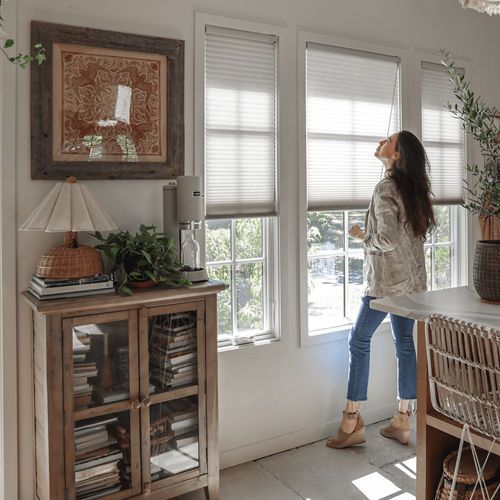
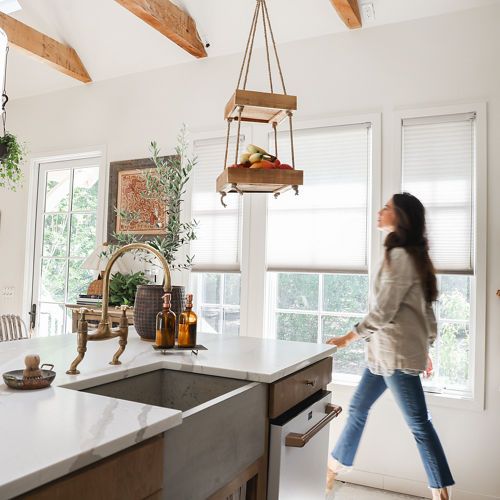
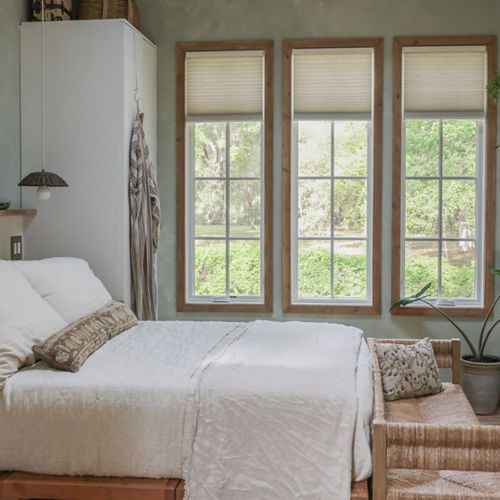
“The idea behind this cottage was to keep everything open and fluid, allowing the spaces to multitask as needed,” Whitney explains. “There are really only four rooms: the primary bedroom, the children’s bedroom, the bathroom/laundry room combo, and the main room — which includes the living, dining and kitchen spaces.”
Such small-space living focuses on reduced energy use, more resource-efficient and earth-friendly materials, and less waste. “We prioritized ushering the outdoors in, leaning into biophilic design principles through the use of select building materials, decor and overall design,” she says. “This overlaps with our sustainability efforts as well, as we used natural elements such as ethically and locally river-recovered pine, tadelakt [a type of plaster] and lime paint, and energy-efficient coverings for our numerous windows and French doors.”

Carefully placed, functional features like pocket doors and energy-efficient shades let the compact cottage’s small space sing. “The pocket doors leading from the main room to all other rooms allow us to privatize areas when desired, but are usually open to allow for uninterrupted light and airflow,” reflects Whitney. “Ample vertical windows and vaulted ceilings help make the little home appear much larger than the footprint actually is.”
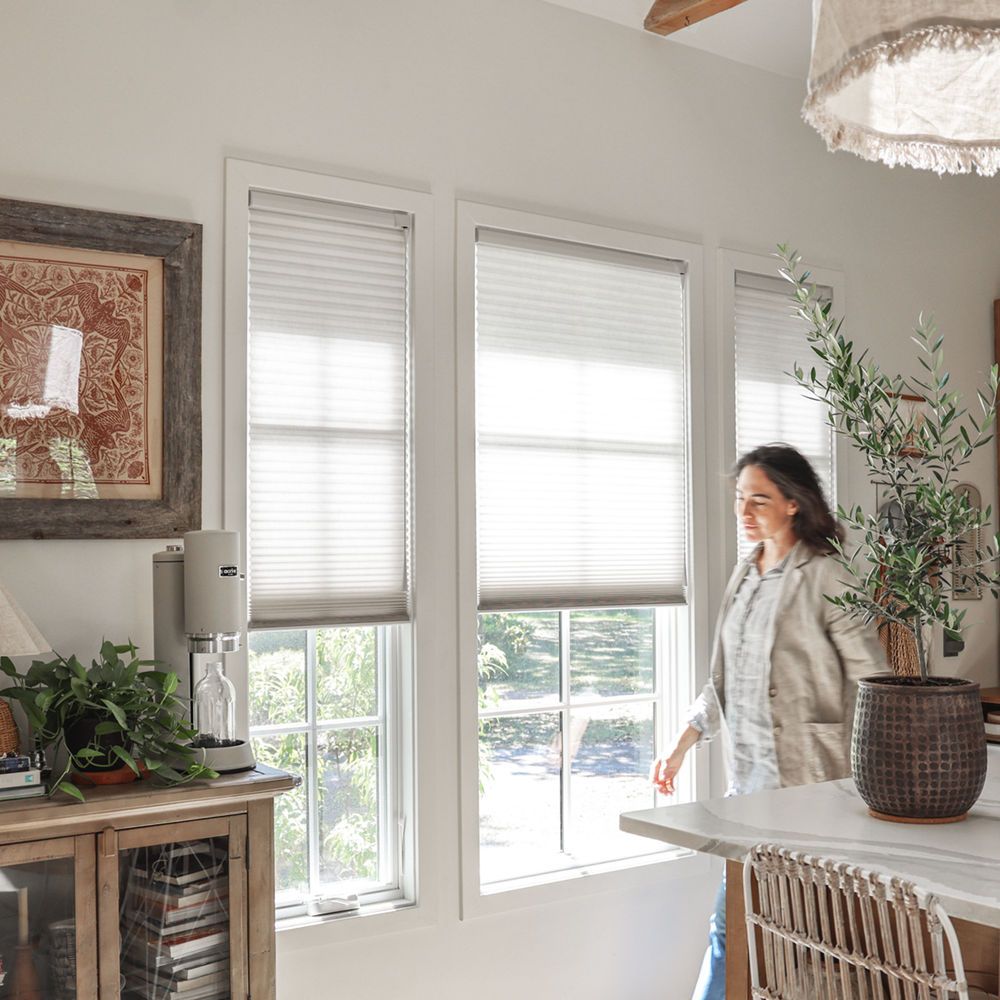
Thanks to its conscious design, the cottage is only lit by the sun during daylight hours — no artificial lighting needed here. “Due to the very deliberate placement of the structure and its numerous skylights and windows, we rely solely on the sun to illuminate every inch within our home throughout the day. We avoided installing built-in lighting in most of the spaces, and there's no need to use our accent fixtures except at night. The mindfully selected, light-filtering shades cut out the harsh rays and glare of the sun, while still allowing the happy glow of daylight to brighten the interior.”
The light-filtering, energy-efficient window treatments that adorn the home are Duette® Honeycomb Shades in Architella® Elan® fabric, in the Birch Bark colorway. Their insulating, cellular design helps control solar heat gain — which is particularly beneficial in Florida’s hot and steamy climate.
“I love these textured window treatments. [They are] such great examples of functional decor,” says Whitney of the shades, which also provide sound absorption, keep cold air at bay and are available in an array of lush fabrics, including options made from over 50 percent recycled content.
“I value that — especially during a time of climate crisis when we can’t bring newly manufactured items into our home unless it’s something that is beautiful and justifies the inclusion in a new build or a new home improvement.”
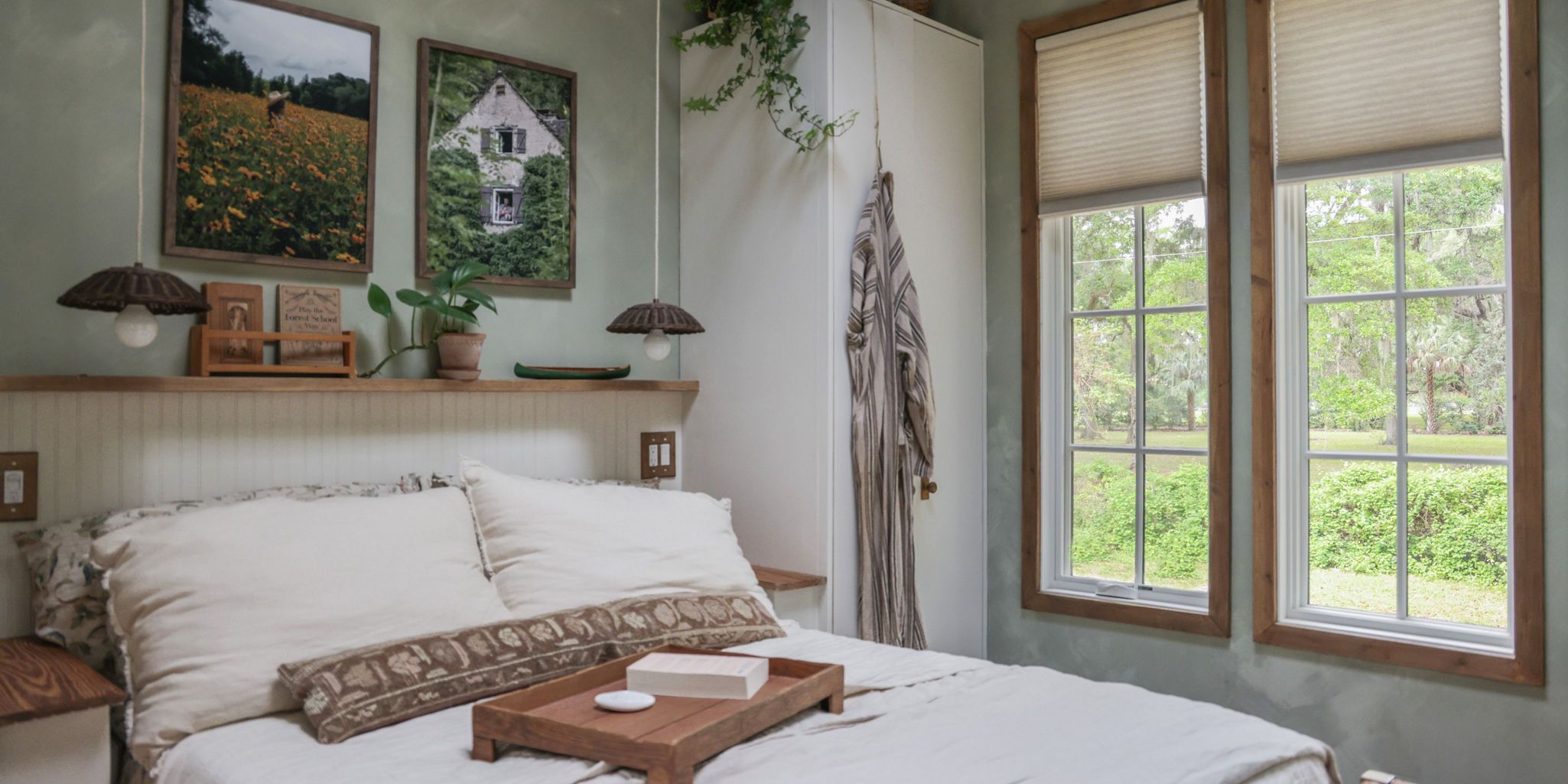
Whitney shares some tips on designing sustainably, whether you’re a newbie or seasoned pro:
Reduce the need for artificial light
Mirrors are a very inexpensive design feature you can use in almost any space to brighten it up. Mirrors will double and bounce the light and create depth. And with light-filtering shades, such as those from Hunter Douglas, you can enjoy an ambient glow when the shades are lowered, preventing you from turning on overhead lights or sconces.
Regulate temperature
In small spaces, temperature regulation can sometimes be tricky, as heating and cooling happen rather immediately and dramatically given the compact square-footage. Having a slow and steady method of keeping the home comfortable is often best, which is why I personally prefer using fans, energy-efficient window coverings, and petite wood burning stoves instead of powerful and energy-consuming HVAC systems, when possible.
Let sustainability inform style
Sourcing vintage and handmade homewares can result in a greener space that functions and appears the way you want it to. This also cuts back on the production and packaging of newly manufactured goods. If you must purchase something new, try to choose home accents that serve more than a design purpose. Functional home accents like Duette Honeycomb Shades, for example, add color, texture and depth to a space, while simultaneously reducing a household’s energy consumption.
Go gradual
In an existing space, change [should be] gradual. I see a lot of people check off the “sustainability” list and get rid of everything that they have. The point is to use everything you have until the wheels fall off, and then, at that point, instead of opting for the same thing that has a negative product life cycle, make sure we’re bringing things into our lives that have a fully traceable product life cycle — so we know how those materials were manufactured and where they are going when no longer needed.
Think local
When it comes to a renovation, restoration or new build, it’s important to look at where the materials originate. There might be a super sustainable material in Japan but if you’re in the U.S., there’s a huge footprint involved in bringing it over. Materials found locally, left over from another job, may be a better option.

Cellular Shades
Duette®
Learn More
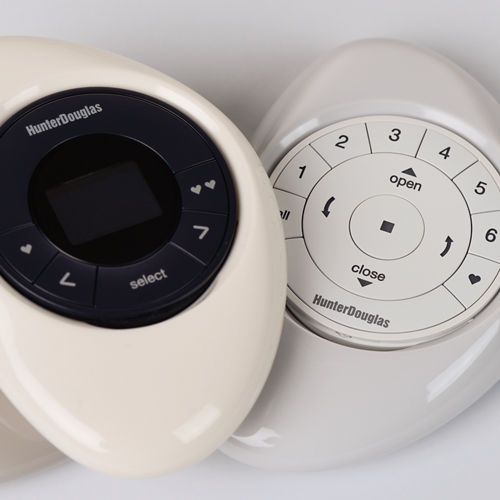
Smart, Motorized Shades
PowerView® Automation
Request a Consultation
Connect with a local dealer for personalized service.